Den Unterschied zwischen den Batterien EVE MB31 und LF304 verstehen
In der Welt der fortschrittlichen Lithiumbatterietechnologie kann die Wahl der richtigen Zelle für Ihr Projekt einen großen Einfluss auf Leistung, Langlebigkeit und Kosten haben. Zu den führenden Optionen zählen die Batterien EVE MB31 und LF304 , die sich häufig durch ihre beeindruckenden Spezifikationen und Zuverlässigkeit auszeichnen. Ob Sie ein großes Energiespeichersystem entwerfen, einen Batteriesatz für ein Elektrofahrzeug bauen oder eine netzunabhängige Solaranlage aufrüsten – das Verständnis der Unterschiede zwischen den Batterien EVE MB31 und LF304 ist entscheidend. Dieser umfassende Leitfaden hilft Ihnen, eine fundierte Entscheidung zu treffen, indem er Spezifikationen, Leistungsmerkmale, Anwendungen und mehr vergleicht.
- Warum EVE MB31- und LF304-Batterien vergleichen?
- Spezifikationsübersicht der EVE MB31- und LF304-Batterien
- Wichtige Leistungsunterschiede zwischen EVE MB31- und LF304-Batterien
- Physisches Design und Verarbeitungsqualität der EVE MB31- und LF304-Batterien
- Unterschiede in realen Anwendungen
- Unterschiede im Wärmemanagement zwischen EVE MB31- und LF304-Batterien
- Preise und Verfügbarkeit der EVE MB31- und LF304-Batterien
- Zertifizierungen und Qualitätssicherung
- Hintergrund und Ruf des Herstellers
- Community-Feedback und Benutzererfahrung
- Überlegungen zur Wartung und zum Batteriemanagement
- Zusammenfassung: Welche Batterie sollten Sie wählen?
Warum EVE MB31- und LF304-Batterien vergleichen?
Sowohl die EVE MB31 als auch die LF304 sind prismatische LiFePO4-Zellen (Lithium-Eisenphosphat) mit hoher Kapazität, die für anspruchsvolle Anwendungen entwickelt wurden. Sie unterscheiden sich jedoch in subtilen Punkten, die ihre Eignung für unterschiedliche Anwendungsfälle beeinträchtigen können. Wenn Sie die Unterschiede zwischen den Batterien EVE MB31 und LF304 kennen, können Sie die Batterie auswählen, die perfekt zu Ihren Anforderungen passt.
Spezifikationsübersicht der EVE MB31- und LF304-Batterien
EVE MB31 Spezifikationen
Nennkapazität: 302 Ah ~ 305 Ah
Nennspannung: 3,2 V
Innenwiderstand: ≤ 0,25 mΩ
Gewicht: ~5,48 kg
Abmessungen: 207 mm x 173 mm x 72 mm
Lebensdauer: ≥ 6000 Zyklen bei 0,5 °C, 80 % DOD
Betriebstemperatur: -20 °C bis 60 °C
LF304 Spezifikationen
Nennkapazität: 304 Ah
Nennspannung: 3,2 V
Innenwiderstand: ≤ 0,25 mΩ
Gewicht: ~5,46 kg
Abmessungen: 207 mm x 173 mm x 71,5 mm
Lebensdauer: ≥ 6000 Zyklen bei 0,5 °C, 80 % DOD
Betriebstemperatur: -20 °C bis 60 °C
Auf den ersten Blick scheinen die technischen Daten der Batterien EVE MB31 und LF304 nahezu identisch. Es gibt jedoch feine Unterschiede, die es zu untersuchen gilt.
>>Siehe auch die häufigsten Fragen zur Sicherheit von Golfwagen
Wichtige Leistungsunterschiede zwischen EVE MB31- und LF304-Batterien
Kapazität und Spannungstoleranz
Obwohl beide Batterien mit einer Nennkapazität von knapp 304 Ah arbeiten, zeigen Chargentests häufig, dass EVE MB31- Zellen ihre Nennkapazität (~305 Ah) teilweise leicht überschreiten, während LF304- Zellen stets genau ihre Nennkapazität liefern. Wenn Sie die maximal nutzbare Kapazität anstreben, kann dies ein entscheidender Faktor sein.
Innenwiderstand und Effizienz
Sowohl EVE MB31 als auch LF304 weisen einen extrem niedrigen Innenwiderstand auf und eignen sich daher ideal für Hochstromanwendungen. Anwenderberichte und Labortests zeigen jedoch häufig, dass MB31-Zellen bei sehr hoher Belastung die Leistung von LF304-Zellen leicht übertreffen und dabei eine geringfügig höhere Spannungsstabilität aufweisen.
Zykluslebensdauer
Beide Batteriemodelle erreichen ≥ 6000 Zyklen bei Standard-Lade-/Entladeraten von 0,5 C und einer Entladetiefe von 80 % (DOD). Praxisberichte deuten auf eine ähnliche Lebensdauer hin, einige Tester weisen jedoch darauf hin, dass LF304- Zellen insbesondere in Hochtemperaturumgebungen eine etwas höhere Konstanz bei der Erreichung der vollen Zykluslebensdauer aufweisen.
Physisches Design und Verarbeitungsqualität der EVE MB31- und LF304-Batterien
Gehäusedesign und -aufbau
Sowohl die EVE MB31- als auch die LF304- Batterien werden in robusten prismatischen Aluminiumgehäusen geliefert, die für Wärmeableitung und mechanische Haltbarkeit optimiert sind. Geringe Maßunterschiede (MB31 ist 0,5 mm dicker) sind im Allgemeinen vernachlässigbar, können aber bei engen Batteriefachkonstruktionen von Bedeutung sein.
Anschlussklemmen und Montage
Beide Modelle verfügen über Gewindeanschlüsse, die einen sicheren und flexiblen elektrischen Anschluss ermöglichen. Zwischen den Batterien EVE MB31 und LF304 gibt es in diesem Bereich keine nennenswerten Unterschiede.
Unterschiede in realen Anwendungen
Off-Grid-Solarsysteme
In netzunabhängigen Solaranlagen, in denen Batteriebänke schwankenden Lasten und inkonsistenter Ladung ausgesetzt sind (z. B. an bewölkten Tagen), zeigen LF304- Batterien ein etwas konsistenteres Verhalten bei der Spannungswiederherstellung nach Tiefentladungen.
Elektrofahrzeuge (EVs)
Für den Umbau von Elektrofahrzeugen oder Elektromotorrädern werden die EVE MB31 -Batterien aufgrund ihrer geringfügig besseren Hochstromleistung, die sich in einer verbesserten Beschleunigung und Leistungsabgabe niederschlägt, häufig bevorzugt.
Energiespeicherung für Privathaushalte
Für stationäre Energiespeicherlösungen im Haushalt eignen sich die Batterien EVE MB31 oder LF304 hervorragend. Die höhere Zyklenbeständigkeit der LF304 kann jedoch bei Langzeitanwendungen, bei denen ein Austausch kostspielig ist, einen leichten Vorteil bieten.
Unterschiede im Wärmemanagement zwischen EVE MB31- und LF304-Batterien
Sowohl die EVE MB31- als auch die LF304- Batterien funktionieren im empfohlenen Temperaturbereich von -20 °C bis 60 °C gut. Allerdings:
LF304- Batterien weisen bei höheren Umgebungstemperaturen (> 45 °C) eine geringfügig bessere Leistungsstabilität auf.
EVE MB31 -Batterien zeigen eine etwas schnellere thermische Erholung nach Hochstromentladungen.
Preise und Verfügbarkeit der EVE MB31- und LF304-Batterien
Marktpreistrends
Aufgrund der größeren Produktionsmengen und der größeren weltweiten Verfügbarkeit sind LF304- Batterien pro Ah in der Regel geringfügig günstiger.
Lieferkette und Lagerbestände
LF304: Im Allgemeinen ist die Beschaffung in großen Mengen über Händler und Online-Plattformen einfacher.
EVE MB31: Aufgrund der Nachfrage von Nischenanwendungen mit hoher Leistung ist die Verfügbarkeit manchmal eingeschränkt.
Zertifizierungen und Qualitätssicherung
Sowohl die EVE MB31- als auch die LF304- Batterien erfüllen wichtige internationale Sicherheits- und Leistungsstandards:
UL/IEC 62133
UN38.3 Transportsicherheit
RoHS-Konformität
ISO 9001 Qualitätssicherung in der Fertigung
Zu den MB31-Batterien von EVE gehören manchmal zusätzliche Werksdokumente, die die Testergebnisse einzelner Zellen bescheinigen. Dies kann für Benutzer interessant sein, die nach optimal aufeinander abgestimmten Batteriepacks suchen.
Hintergrund und Ruf des Herstellers
EVE Energy Co., Ltd.
EVE ist ein etablierter Marktführer in der Herstellung von Lithiumbatterien und bekannt für die Lieferung hochwertiger und zuverlässiger LiFePO4-Zellen wie der MB31 .
CATL (Contemporary Amperex Technology Co., Ltd.)
Der LF304 wird häufig von CATL, dem weltweit größten Hersteller von Lithiumbatterien, hergestellt, wodurch robuste Lieferketten und bewährte Qualität gewährleistet werden.
Community-Feedback und Benutzererfahrung
Bastler und Heimwerker
In Batteriebau-Communitys erhalten sowohl EVE MB31- als auch LF304- Batterien durchweg hohes Lob. Benutzer zitieren häufig:
EVE MB31: Überlegene Spannungsstabilität bei hohen Belastungen.
LF304: Hervorragendes Preis-Leistungs-Verhältnis und vorhersehbare Langzeitleistung.
Professionelle Integratoren
Kommerzielle Integratoren bevorzugen LF304 häufig für große private und gewerbliche ESS-Projekte (Energiespeichersystem) aufgrund seiner Konsistenz und einfachen Beschaffung.
>>Siehe auch Unterschied zwischen EVE MB30- und MB31-Batterien
Überlegungen zur Wartung und zum Batteriemanagement
Die Auswahl des richtigen Batteriemanagementsystems (BMS) ist entscheidend, unabhängig davon, ob Sie sich für EVE MB31- oder LF304- Batterien entscheiden:
Stellen Sie sicher, dass das BMS die gewünschten Spitzenstromlasten unterstützt.
Überwachen Sie regelmäßig den Zellausgleich, um die Lebensdauer zu maximieren.
Halten Sie die Temperaturen im optimalen Bereich.
Zusammenfassung: Welche Batterie sollten Sie wählen?
Bei der Betrachtung des Unterschieds zwischen EVE MB31- und LF304- Batterien ist Ihre Anwendung der entscheidende Faktor:
Wählen Sie EVE MB31, wenn:
Sie benötigen eine geringfügig bessere Hochstromleistung, beispielsweise für Elektrofahrzeuge oder große, über Wechselrichter betriebene Lasten.
Wählen Sie LF304 , wenn:
Sie legen Wert auf eine gleichbleibende langfristige Zykluslebensdauer und eine etwas bessere Hochtemperaturleistung, insbesondere bei stationären Speicheranwendungen.
Letztendlich bieten beide Batterien ein hervorragendes Preis-Leistungs-Verhältnis und eine hervorragende Leistung im LiFePO4-Bereich. Wenn Sie den Unterschied zwischen den Batterien EVE MB31 und LF304 kennen, können Sie die optimale Option für Ihren individuellen Energiebedarf auswählen.
Für alle, die in fortschrittliche Lithiumbatterietechnologie investieren, ist es wichtig, den Unterschied zwischen EVE MB31- und LF304 -Batterien zu verstehen. Ob netzunabhängige Solarenergie, Elektromobilität oder die Speicherung von Energie im Haushalt – die Wahl der richtigen Batterie beeinflusst Effizienz, Leistung und langfristige Zuverlässigkeit. Jetzt sollten Sie einen klaren Überblick über die beiden Spitzenbatteriezellen und ihre jeweiligen Vorteile haben.
Denken Sie bei der Umsetzung Ihres Projekts daran, dass sowohl die EVE MB31- als auch die LF304- Batterien bewährte Leistungsträger sind. Ihre spezifischen Anforderungen – vom Spitzenstrombedarf über Platzbeschränkungen bis hin zur erwarteten Lebensdauer – bestimmen Ihre endgültige Wahl. Egal für welche Batterie Sie sich entscheiden, Sie profitieren von der Robustheit, Sicherheit und Langlebigkeit der modernen LiFePO4-Technologie.

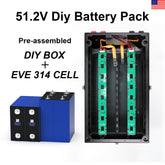

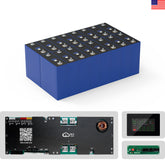

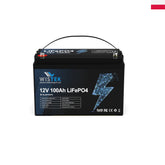
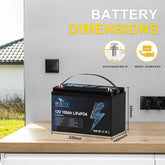
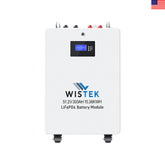
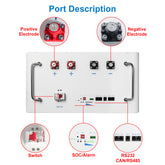
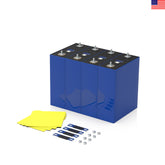
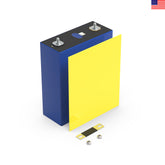
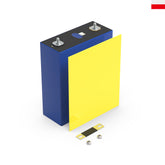

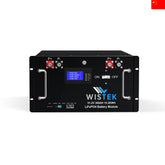
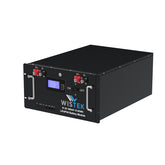
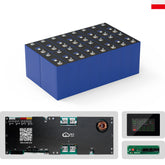








Leave a comment
All blog comments are checked prior to publishing